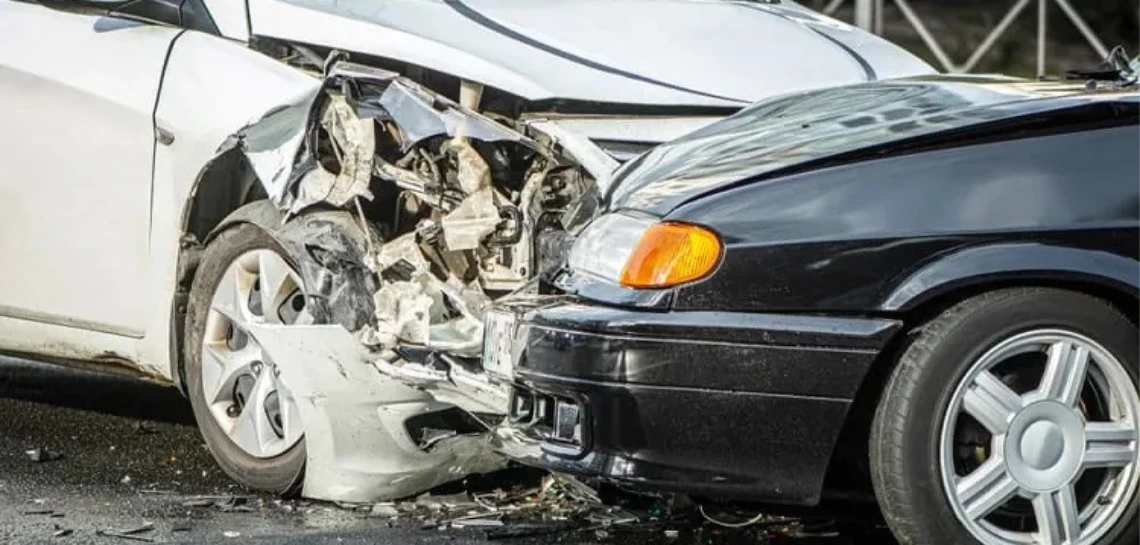
Car collisions can occur in various ways, each with its own characteristics and potential consequences. Understanding the common types of car crashes is important for drivers and passengers to be aware of the risks and take necessary precautions.
By familiarizing ourselves with the following collision types, we can better understand their causes, potential injuries, and take proactive measures to promote road safety.
Rear-End Collision
A rear-end collision occurs when one vehicle crashes into the back of another vehicle. It often happens due to factors like tailgating, distracted driving, sudden braking, or inadequate following distance. Rear-end collisions can result in whiplash injuries and damage to the rear vehicle’s bumper, while the front vehicle may sustain front-end damage. By collecting pictures of car crashes and injuries, the journey to pursue compensation may become easy.
Head-On Collision
A head-on collision involves two vehicles colliding front to front. These accidents are usually severe and occur when a driver crosses the centerline, drives the wrong way on a one-way street, or loses control due to factors like impaired driving or distraction. Head-on collisions often result in significant injuries or fatalities.
Side-Impact Collision
Also known as a T-bone or broadside collision, this occurs when the front of one vehicle collides with the side of another vehicle. It commonly happens at intersections, especially when a driver fails to yield the right of way or runs a red light. They can cause serious injuries in a car accident, especially to occupants on the side of impact.
Sideswipe Collision
A sideswipe collision occurs when two vehicles traveling parallelly make contact. It often happens when a driver changes lanes without proper signaling, fails to check blind spots, or drifts out of their lane. While sideswipe collisions may not cause severe injuries, they can result in vehicle damage and loss of control.
Rollover Collision
Rollover collisions involve a vehicle flipping onto its side or roof. They commonly occur when a driver loses control during high-speed turns, overcorrects while swerving, or experiences a collision with significant impact forces. Rollover collisions tend to result in severe injuries due to the potential for vehicle occupants to be ejected or trapped inside.
Single-Vehicle Collision
A single-vehicle collision involves a vehicle colliding with an object or obstacle, such as a tree, wall, or guardrail. It can occur due to driver error, such as distracted driving, drowsiness, or impairment. Adverse weather conditions, poor road conditions, or mechanical failures can also contribute. The severity of injuries and vehicle damage in single-vehicle collisions varies based on the circumstances.
Multi-Vehicle Pileup
A multi-vehicle pileup refers to a collision involving multiple vehicles. These accidents often occur on highways or in areas with high traffic volume. One initial collision can trigger them, leading to a chain reaction involving several vehicles. Multi-vehicle pileups are typically more severe due to the higher number of vehicles involved and the potential for secondary impacts.
Intersection Collision
An intersection collision occurs when two or more vehicles collide at an intersection. These accidents can result from factors such as failure to yield, running a red light, or misjudging the speed or distance of other vehicles. Intersection collisions can vary in severity based on the speed and angle of impact and the protective features of the vehicles involved.
Parking Lot Collision
Parking lot collisions happen when vehicles collide while maneuvering in parking lots or structures. These accidents can result from drivers failing to yield, backing out without proper caution, or not following parking lot signage and markings. While parking lot collisions typically occur at lower speeds, they can still cause property damage and minor injuries.
Side-Swipe and Merge Collisions
Side-swipe and merge collisions occur when two vehicles traveling in the same direction make contact. They often happen during lane changes or when merging into traffic. These accidents can result from driver inattention, failure to signal properly, or misjudgment of the available space. While side-swipe collisions are generally less severe, they can lead to loss of control or minor injuries.
Need Legal Help? Contact An Experienced Lawyer
A car accident lawyer can provide valuable assistance if you have been involved in a fatal car wreck. They can help you navigate the legal complexities, protect your rights, and ensure you receive fair compensation for your damages and injuries.
Furthermore, they can gather evidence, interview witnesses, and work with accident reconstruction experts to build a strong personal injury case.
